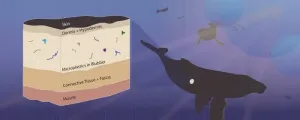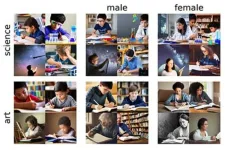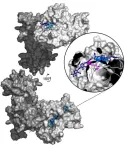(Press-News.org) URBANA, Ill. – Madagascar is one of the poorest countries in the world and access to health care is limited for many people. Childhood vaccinations are a crucial component of preventative care, but vaccination rates remain below the World Health Organization’s goal of reaching 95% of children. A new study from the University of Illinois Urbana-Champaign examines the effectiveness of a health intervention program that enlists community-based health workers to promote child vaccination uptake.
“Childhood vaccinations are a cost-effective investment that can have large ripple effects. Vaccines can reduce child mortality and improve health outcomes, which leads to further socio-economic benefits. It’s important to learn how we can improve vaccination uptake and what the barriers are,” said Catalina Herrera-Almanza, assistant professor in the Department of Agricultural and Consumer Economics, part of the College of Agricultural, Consumer and Environmental Sciences at Illinois. She is one of the two authors of the study, published in World Development.
Herrera-Almanza and co-author Maria Rosales-Rueda, assistant professor of economics at Rutgers University, analyzed the effects of Santanet2, a large-scale health intervention program that relied on community-based health workers in remote areas of Madagascar.
Santenet2 was funded by the United States Agency for International Development (USAID) and implemented in collaboration with the national government and local NGOs. During its rollout from 2009 to 2011, the program reached 11 million people, about half of the country’s population.
“In Madagascar, 65% of people live five kilometers or more from a primary health center. In this context, having community health workers who can provide basic services and information is very important. The program trained two community health workers in each village, one focusing on maternal health and the other on child health,” Herrera-Almanza explained. “These workers are unpaid volunteers who are motivated by a desire to help their local community.”
Childhood vaccinations, including polio, diphtheria, and measles, are recommended for all infants. The community workers did not administer vaccines, but they informed families about vaccination campaigns and schedules and encouraged them to participate.
“If you live in a very remote place with limited access to infrastructure, roads, and information, you don't know when or where there is going to be a vaccination campaign, so these community health workers were really mobilizing the community,” Herrera-Almanza said.
The researchers analyzed data before, during, and after Santanet2’s implementation. They combined information about program rollout with a nationally representative household survey and geocoded information about public health facilities.
When comparing communities with and without the program, they found no effect overall. However, when they looked at only the most remote villages, located 10 kilometers or more from health centers, there was a significant increase in vaccination rates.
“People who live closer to the health centers may already have the information they need. We know vaccination rates decrease rapidly the further you are from the health center. Our results showed community health workers really improved vaccination uptake in the most remote areas. Basically, the people who benefit the most from these programs are those living the farthest away,” she added.
Next, the researchers aimed to identify characteristics of households that benefited from the program. They found no effect of maternal education or poverty level; however, the mother’s religious affiliation had a significant effect on vaccination rates.
“We found households that identify as Catholic or Protestant were more reluctant to vaccinate their children. This is about 60% of the sample, so it is an important group. We can’t say from these data why that is the case. Perhaps religious affiliation is associated with skepticism towards vaccinations, or it could simply be due to the influence of social networks,” Herrera-Almanza said.
The researchers concluded the program was effective in reaching those who needed it the most. They also pointed out that even if there is infrastructure and resources to administer vaccines, there may be additional barriers such as religious or social group affiliation that need to be addressed in future programs.
The paper, “Community-based health programs and child vaccinations: Evidence from Madagascar,” is published in World Development [DOI: 10.1016/j.worlddev.2023.106322]. Funding support was provided by the Population Reference Bureau and the Hewlett Foundation.
END
Community health program boosts child vaccinations in remote areas of Madagascar
2023-08-10
ELSE PRESS RELEASES FROM THIS DATE:
Athletes have no reason to be concerned by their COVID-19 vaccine this winter but timing matters
2023-08-10
It is now almost a rule of thumb: As soon as an athlete falls to the ground with a sudden cardiac arrest, social media is awash with claims that COVID-19 vaccinations are to blame. This was the case with English footballer Charlie Wyke, cyclist Sonny Colbrelli and, most recently, with college basketballer, and son of LeBron, Bronny James. In the view of Harald Jorstad, Sports Cardiologist at Amsterdam UMC, there is no evidence to support these claims, but timing of the vaccination can be structured to not ...
Microplastics found embedded in tissues of whales and dolphins
2023-08-10
BEAUFORT, N.C. – Microscopic plastic particles have been found in the fats and lungs of two-thirds of the marine mammals in a graduate student’s study of ocean microplastics. The presence of polymer particles and fibers in these animals suggests that microplastics can travel out of the digestive tract and lodge in the tissues.
The study, slated for the Oct. 15 edition of Environmental Pollution, appeared online this week.
Harms that embedded microplastics might cause to marine mammals are yet to be determined, ...
Tool finds bias in state-of-the-art generative AI model
2023-08-10
Text-to-image (T2I) generative artificial intelligence tools are increasingly powerful and widespread tools that can create nearly any image based on just a few inputted words. T2I generative AI can create convincingly realistic photos and videos which are being used more and more for a multitude of purposes, from art to political campaigning.
However, the algorithmic models that power these tools are trained on data from humans, and can replicate human biases in the images they produce, such as biases around gender and skin tone. These biases can harm marginalized populations, reinforcing stereotypes and potentially leading to discrimination.
To address these implicit biases, ...
Chloride Ions From Seawater Eyed As Possible Lithium Replacement In Batteries of the Future
2023-08-10
Sodium, Potassium and zinc have all been promising contenders for lithium’s place in rechargeable batteries of the future, but researchers at Worcester Polytechnic Institute (WPI) have added an unusual and more abundant competitor to the mix: chloride, the richest negatively charged ions in seawater.
Xiaowei Teng, the James H. Manning professor of Chemical Engineering at WPI, has discovered a new redox chemistry empowered by chloride ions for the development of seawater green batteries.
Modern lithium-ion batteries used in various applications, including electric vehicles, can be problematic for grid storage, given their ...
Mechanism underlying bacterial resistance to the antibiotic albicidin revealed
2023-08-10
A new analysis shows that infectious bacteria exposed to the antibiotic albicidin rapidly develop up to a 1,000-fold increase in resistance via a gene amplification mechanism. Mareike Saathoff of Freie Universität Berlin, Germany, and colleagues present these findings August 10th in the open access journal PLOS Biology.
Bacterial resistance to antibiotics is a growing problem associated with millions of deaths around the world every year. Understanding how bacteria evolve resistance is key to developing more effective antibiotics and strategies for using them.
In recent years, albicidin has emerged as a promising antibiotic capable of killing a wide range of bacterial species ...
Researchers engineer bacteria that can detect tumor DNA
2023-08-10
Pushing into a new chapter of technologically advanced biological sensors, scientists from the University of California San Diego and their colleagues in Australia have engineered bacteria that can detect the presence of tumor DNA in a live organism.
Their innovation, which detected cancer in the colons of mice, could pave the way to new biosensors capable of identifying various infections, cancers and other diseases.
The advancement is described Aug. 11, 2023, in the journal Science. Bacteria previously have been designed to carry out various diagnostic and therapeutic functions, but lacked the ability to identify specific DNA sequences and mutations outside ...
Climate modeling reveals new insights into hominin migration and evolution
2023-08-10
In two studies, researchers demonstrate how climate modeling approaches can fill gaps in our understanding of hominin evolution and migration.
Over the last several decades, research efforts into the lives of hominins – humans and their close ancestors – have shifted from identifying fossils and artifacts to understanding the environmental and climate settings in which they lived and how these factors could have influenced hominin evolution and migration. However, like the hominin fossil record, environmental and climate records that accurately capture environmental change and span the period over which ...
New approaches enable chemical upcycling of polyethylene and polypropylene plastics
2023-08-10
In two studies, researchers present new ways to convert common waste plastics, polyethylene (PE) and polypropylene (PP), into high-value chemical products, including alcohols, aldehydes, surfactants, and detergents. The approaches provide a pathway toward creating a circular plastics economy and the ability to produce high-value chemicals more sustainably. Waste plastics are increasingly being considered a potentially abundant source of feedstock to produce valuable chemical compounds. However, some plastics, particularly polyolefin plastics like PE and PP – widely used commodity plastics that account ...
Special Issue: Australia
2023-08-10
In this Special Issue of Science, three Reviews, a Policy Forum, and a Perspective highlight Australia’s exceptional exposure to the risks of climate change and ecosystem degradation. Australia is home to Earth’s most ancient ecosystems and oldest continuous indigenous cultures, which have survived for more than 60,000 years. However, the continent’s unique ecosystems and cultural history have proved vulnerable to waves of European colonization and its associated social and environmental impacts. Ongoing climate change and the ...
Global ecosystem water use efficiency has stalled since 2001
2023-08-10
Increases in global ecosystem water use efficiency – the ratio between carbon assimilation to water evapotranspiration – have stalled since 2001 due to a rising vapor pressure deficit, according to a new study. The findings highlight one way that the adverse effects of our warming climate may undermine human reliance on nature-based climate solutions to achieve carbon neutrality. The rapid rise of atmospheric carbon dioxide (CO2) has led to substantial changes in global terrestrial carbon and water cycles. One of these impacts has been a generalized increase in ecosystem water use efficiency (WUEeco). On a global scale, WUEeco plays ...

